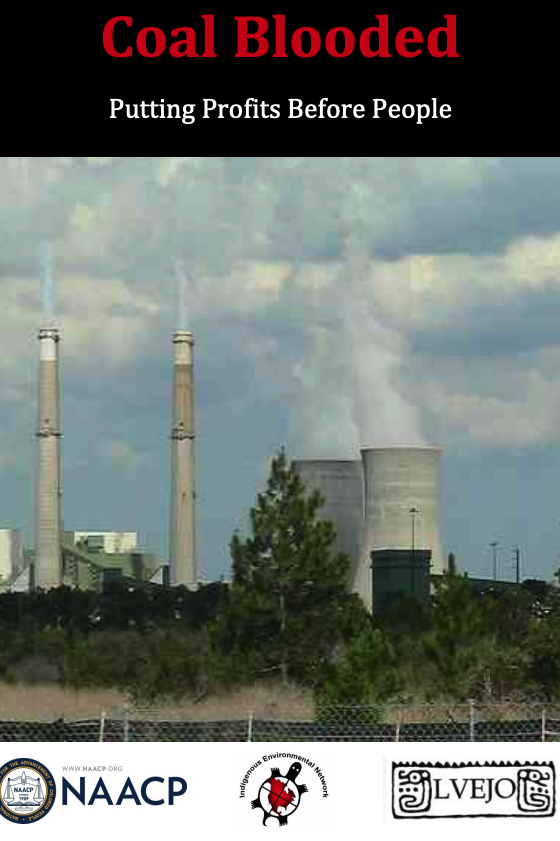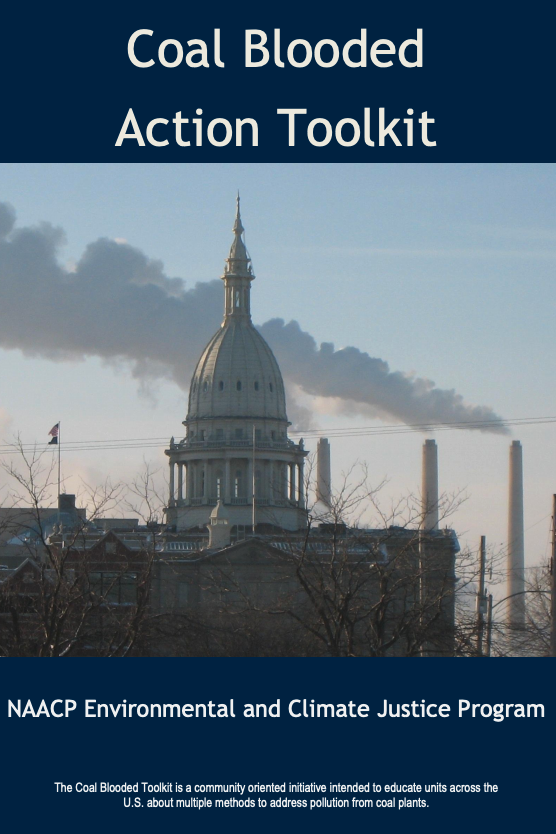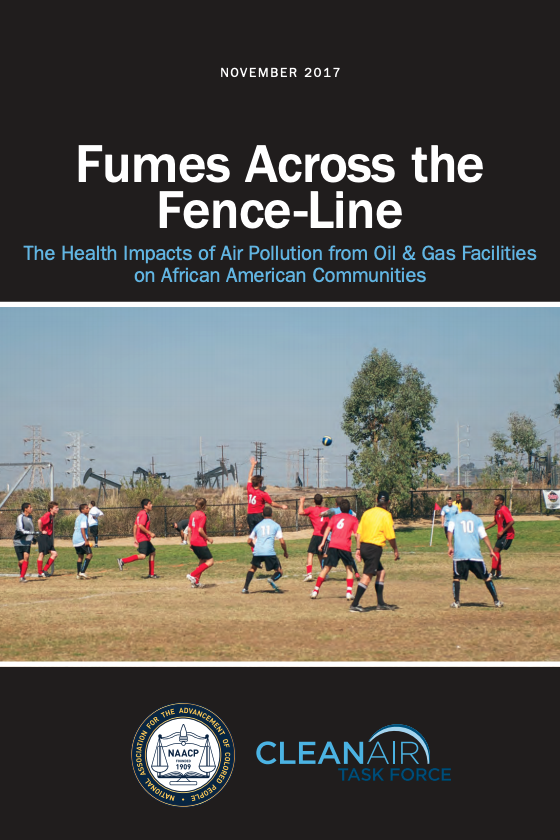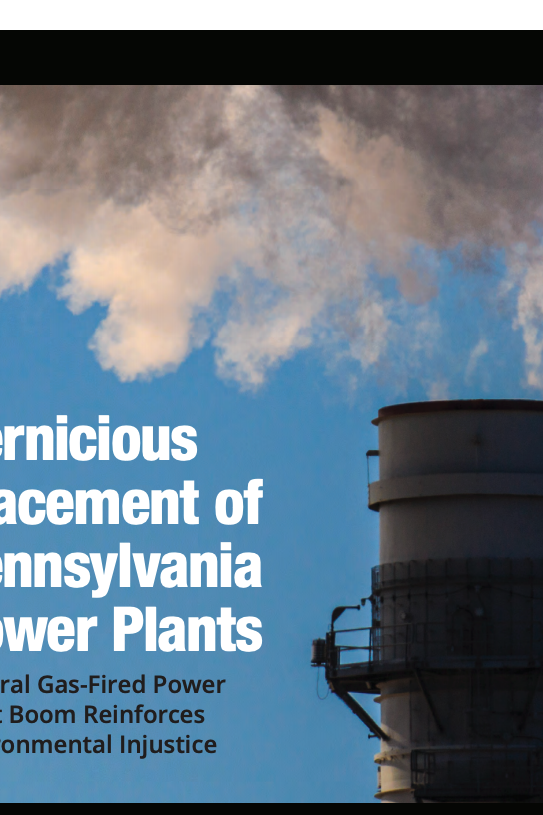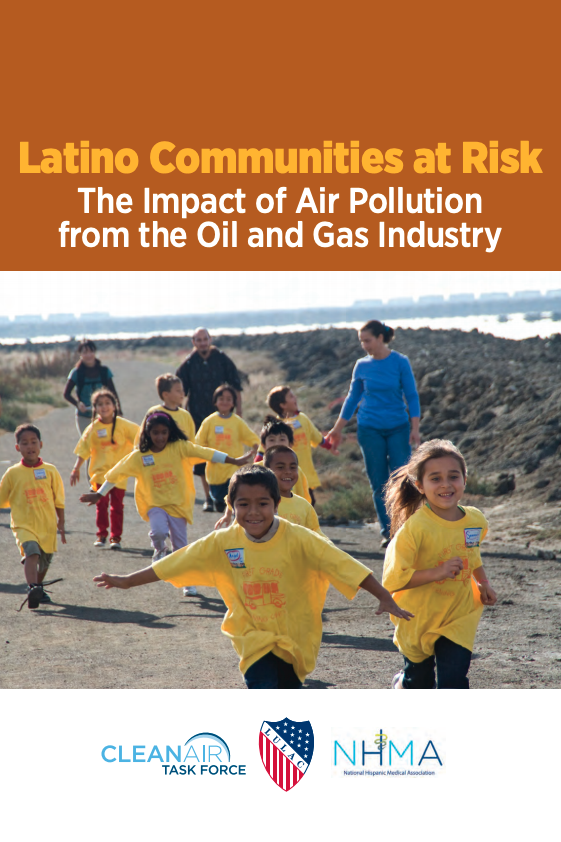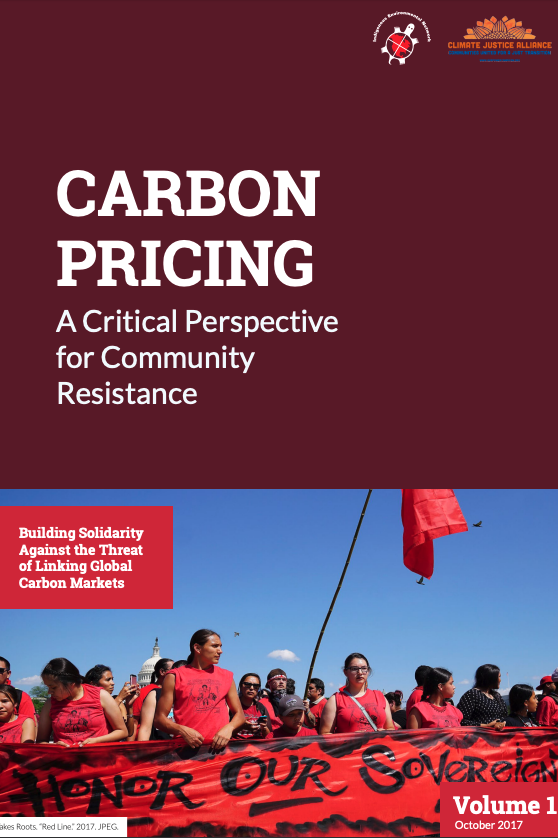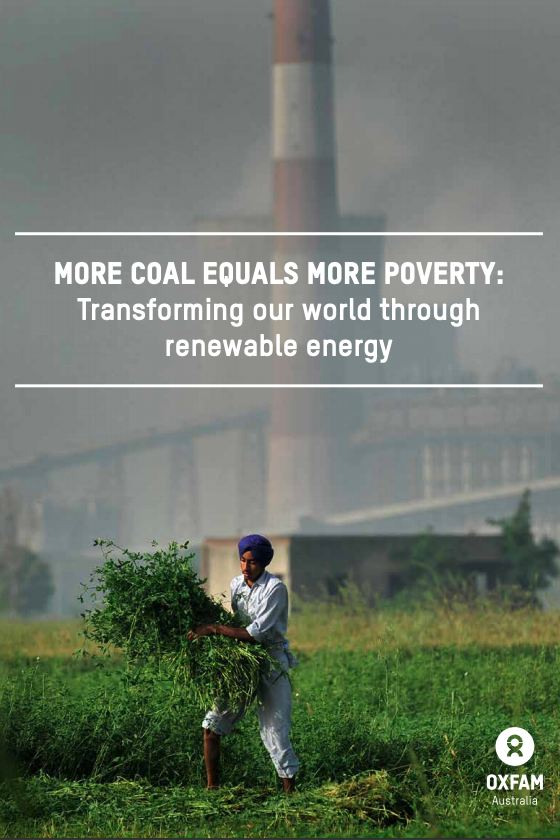Research
Racial Justice & Fossil Fuels
Environmental and racial justice are intertwined with the fight to stop fossil fuel extraction. Black, Brown, Indigenous and other people of color are the most directly impacted by pollution and climate change because of the fossil fuel industry’s racial discrimination. These seven reports delve into the magnitude of the strain and measurable aftereffects of fossil fuels on specific communities.
Resources
Click here to see our latest talking points on health and fossil fuels or download them as a PDF.
Coal Blooded: Putting Profits Before People
NAACP, Indigenous Environmental Network, Little Village Environmental Justice Organization
This report focuses on the role that coal-fired power plants have in the inequitable health outcomes of low income communities and communities of color in the U.S. and in the contribution of greenhouse gasses that drive climate change, the consequences of which also disproportionately impact people of color and low income communities globally. This report is a systematic study of 378 coal-fired power plants in the United States, in which each plant is assigned an environmental justice performance (EJP) ‘score,’ a relative ‘rank,’ and a ‘grade’ based on how it affects low-income communities and communities of color.
Key Findings:
- Overall, a small number of coal power plants have a disproportionately large and destructive effect on the public’s health, especially on the health of low-income people and people of color.
- While many other countries are moving toward cleaner energy sources, 44.6 percent of the U.S.’s electricity comes from coal-fired power plants, which is still relatively unchanged from an historic low of approximately 44 percent in 1972.
- The top ten coal-energy-producing states have an average lung cancer rate of 98.3 per 100,000 (or 19% higher than the U.S. average); while the bottom ten states have an average lung cancer rate of 77.2 per 100,000 (or nearly 7% lower than the U.S. average).
Coal Blooded Action Toolkit
NAACP Environmental and Climate Justice Program
The Coal Blooded Action Toolkit is a companion to the Coal Blooded report. This toolkit serves as a plan of action for NAACP units who want to take action on the findings of the report, particularly on the failing coal fired power plants highlighted in the report. The Coal Blooded Action Toolkit is a step-by-step guide on how-to take action to address toxins from coal fired power plants that are polluting low-income communities and communities of color.
Key Findings:
- Property values of homes near toxic facilities like coal fired power plants have 15% lower than average values in the general markets for those cities.
- At the same time, while African Americans spent $40 billion on energy in 2009, African Americans only comprised 1.1% of those employed in the energy sector and earn less than 1% of the revenue derived from the energy market.
- Though African American communities disproportionately host plants that economically degrade neighborhoods, they reap only trace amounts of the profits.
- Emissions from all power plants in the U.S. (both coal and other fuel sources) are responsible for 30,000 premature deaths, 7,000 asthma-related emergency room visits, and 18,000 cases of chronic bronchitis each year.
- Asthma affects African Americans at a 36 percent higher rate of incidence than White Americans. African Americans are hospitalized for asthma at three times the rate of White Americans and die of asthma at twice the rate of White Americans.
- With African American communities being disproportionately coastal dwelling, displacement of people due sea level rise has also resulted in cultural erosion and this will only increase as global warming continues to melt the ice caps.
- African Americans and Latinos already disproportionately live in food deserts where communities lack access to nutritious foods. The shift in agricultural yields resulting from climate change will only worsen these circumstances.
Fumes Across the Fence-line
The NAACP’s Environmental and Climate Justice Program, The Clean Air Task Force, The National Medical Association
Many African American communities face serious health risks caused by air pollution. Higher poverty levels increase these health threats from air pollution translating into a bigger health burden on African American communities. And, companies often site high polluting facilities in or near communities of color, furthering the unequal distribution of health impacts. This report quantifies the elevated health risk that millions of African Americans face due to pollution from oil and gas facilities.
Key Findings:
- Each year, the oil and gas industry recklessly dumps 9 million tons of methane and toxic pollutants into the air, disproportionately impacting the health of African American communities across the country.
- The oil and natural gas industries violate the Environmental Protection Agency’s (EPA) air quality standards for ozone smog due to natural gas emissions in many African American communities, causing over 138,000 asthma attacks among school children and over 100,000 missed school days each year.
- There are 91 counties across the U.S. that are building oil refineries or where refineries exist close to more than 6.7 million African Americans, disproportionately exposing the community to toxic and hazardous emissions such as benzene, sulfur dioxide and formaldehyde.
Pernicious Placement of Pennsylvania Power Plants
Food and Water Watch
This comprehensive analysis examines demographic characteristics (including race, income, indicators of economic stress and education levels) of the census tracts within a three-mile radius of Pennsylvania’s existing and proposed power plants. The results describe the environmental injustice of gas plant locations.
Key Findings:
- People of color, people living in poverty and recipients of the Supplemental Nutrition Assistance Program (SNAP) disproportionately lived within three miles of existing and proposed power plants.
- Existing Pennsylvania power plants were disproportionately located near areas with a higher proportion of people of color.
- upper-income minority areas were twice as likely to be near an existing power plant than the whitest, lower-income areas: One-fourth of upper-income minority census tracts were within three miles of a plant compared to only 13.4 percent of lower-income areas where whites made up over 90% of the population.
Latino Communities at Risk
Clean Air Task Force (CATF); League of United Latin American Citizens (LULAC); National Hispanic Medical Association (NHMA)
This report sheds light on the health impacts of air pollutants from the oil and gas industry that specifically threaten the health of Latino communities living near oil and gas facilities and in areas far from oil and gas production.
Key Findings:
- More than1.81 million Latinos live within a half mile of existing oil and gas facilities and the number is growing every year.
- As a result, many Latino communities face an elevated risk of cancer due to air toxics emissions from oil and gas development: Nearly 1.78 million Latinos live in counties that face a cancer risk above EPA’s level of concern from toxins emitted by oil and gas facilities.
- The air in many Latino communities violates air quality standards for ozone smog: As a result of ozone increases due to oil and gas emissions during the summer ozone season, Latino communities are burdened by 153,000 childhood asthma attacks and 112,000 lost school days each year.
- Rates of asthma are relatively high in Latino communities.
- Many Latinos are particularly burdened with health impacts from this air pollution due to high levels of poverty and relatively low rates of health insurance coverage.
Carbon Pricing: A Critical Perspective for Community Resistance
Climate Justice Alliance, Indigenous Environmental Network
This report details Climate Justice Alliance principles and the need for a more holistic approach to climate change. As it has always done, this commitment to coal, oil and gas increases the power of the rich while reducing that of the human majority. Communities especially impacted include the frontline communities of peoples living directly alongside fossil-fuel pollution and extraction overwhelmingly: Indigenous Peoples (IPs), Black, Latino, Asian and Pacific Islander communities, working class, poor and peasant communities in the United States, Canada and around the world. These peoples are forced to sacrifice their lives, livelihoods and health for the sake of projects to extract and burn fossil fuels and dump the resulting toxic waste and who have been facing the reality of the climate crisis for decades. In climate disruption and extreme weather events, these communities and indigenous tribal nations are hit first and worse than other communities.
Key Findings:
- Carbon pricing, including carbon trading, carbon taxes and carbon offsets, are false solutions to climate change that do NOT keep fossil fuels in the ground.
- Carbon taxes will always be low, will always be evaded, do not cut pollution to the degree needed, and are greenwash.
- Carbon trading, carbon offsets and REDD+ are fraudulent climate mitigation mechanisms that in fact help corporations and governments keep extracting and burning fossil fuels.
- Token revenues distributed to environmental justice communities from carbon trading or carbon pricing can never compensate for the destruction wrought by the extraction and pollution that is the source of that revenue.
- The injustices, racism and colonialism of carbon pricing schemes are international in scope. Our resistance needs to be international as well.
More Coal Equals More Poverty
OXFAM Australia
This report points to the acknowledgement of coal’s inability to meet the energy needs of the world’s poor, and an understanding of the scale and pace of action necessary from Australia to meet our obligations under the Paris Agreement and help limit warming to 1.5°C — a matter of survival for many vulnerable countries. Recognition of coal’s immense toll on vulnerable communities and why more coal will entrench poverty has been largely absent from the battle over climate and energy policy.
Key Recommendations:
- Commit to no new coal mines or coal mine expansions. This means ruling out public funding for new coal infrastructure.
- Through increased bilateral and multilateral cooperation and international climate finance, expand the sharing of expertise and resources to support developing countries with their renewable energy plans.
- Develop a plan for the complete phase-out of coal and other fossil fuels from the energy system, and a transition to 100% renewable electricity by 2030. This will require a mix of policy instruments and public investments, including providing strong price signals across the economy and supporting research and development.
- Ensure further abatement of carbon pollution through the protection and restoration of the landscape and ecosystems.
- Maximise the opportunities for health, employment, equality, and Indigenous rights, including supporting community-owned and decentralised energy projects, supporting Indigenous-led climate solutions.

